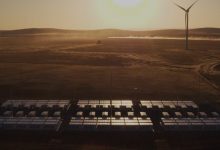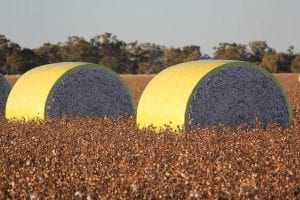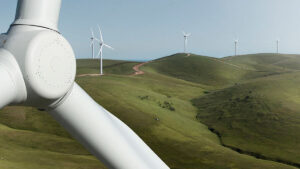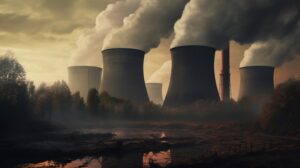French renewable energy and storage developer Neoen has confirmed that the so-called Tesla big battery at Hornsdale in South Australia will get a 50 per cent lift in capacity, and add new innovations and services that will help pave the way for the state to reach its goal of “net 100 per cent renewables”.
As reported exclusively in RenewEconomy on Monday, the battery – officially known as the Hornsdale Power Reserve – will be the first in Australia to provide digital – or “virtual” – inertia to the grid, an important network service previously only delivered only by synchronous machines (coal, gas and hydro).
It is estimated that the upgraded battery could provide 3,000 “megawatt seconds”, or 50 per cent of the state’s inertia requirements, meaning that gas generators can be used more sparingly when there is enough wind and solar to meet the state’s electricity demand. It’s another key marker on the road to eliminating fossil fuels from the grid.
The addition of hundreds of new Tesla Powerpack batteries – at a cost of $71 million – will add 50MW/64.5MWh capacity to the existing facilities of 100MW/129MWh, lifting its capacity by 50 per cent and reinforcing its ranking as the biggest lithium-ion battery in the world.
The new addition is being supported by the Australian Renewable Energy Agency, as reported by RenewEconomy on Monday, along with the Clean Energy Finance Corp, and the South Australia government.
ARENA is kicking in $8 million, the South Australia government is putting in $3 million a year for 5 years (on top of its $4 million a year for 10 year commitment to the original installation for emergency grid support), while it is the first battery to get debt financing support from the CEFC.
Neoen said the inertia benefits – dubbed by Tesla as its Virtual Machine Mode (VMM) – would facilitate the transition towards a high-penetration renewable grid. In South Australia, the state Liberal government has a target of “net 100 per cent renewables’ by around 2030.
Neoen noted that in its first full year of operation, the battery saved consumers more than $50 million, and these savings would continue to grow once the new addition was in place in 2020. It also earned a profit of $22 million in its first full year of operations.
“Alongside additional power system reliability and continued cost savings to consumers, the expansion will provide an Australian-first large-scale demonstration of the potential for battery storage to provide inertia to the network which is critical to grid stability and the future integration of renewable energy,” Neoen said in a statement.
“This will ensure South Australia can continue to harvest its world-class wind and solar resources and support the transition to net 100% renewable energy generation in the 2030s, and further drive down electricity prices for all consumers.”
South Australia energy minister Dan van Holst Pellekaan said in a statement the Hornsdale Power Reserve will continue to break new ground in providing and proving the benefits of inertial response from inverter technologies.
It is the first project to get funding from its $50 million grid storage fund announced last year, in which it promised to “unlock the hidden value of battery storage” – a reference to the many different services that batteries can provide, many of which are not recognised by market or regulatory signals.
“As South Australia continues to increase its share of renewable energy generation, large-scale storage solutions such as grid-scale batteries will help address some of the key challenges impacting South Australia’s power system, such as energy reliability and inertia,” van Holst Pellekaan said in a statement.
“By providing an additional 50MW of fast ramping market capacity it is designed to reduce spot price volatility and protect the grid from network disturbances, resulting in more affordable, reliable, and secure power for all South Australians.”
The state has recently committed to installing four synchronous condensers around its network to provide the inertia and system strength needed for the grid. That move means the Australian Energy Market Operator will not need to turn to gas generators in the state for system inertia, and so will increase the percentage of renewables.
However, synchronous condensers are a 50-year-old technology, and it is thought that batteries – which can perform up to 20 other different services – will be a cheaper and smarter option for a high renewables grid.
If it proves its worth, it will also mean that the haphazard installation of synchronous condensers elsewhere in the grid, the result of much criticised rules imposed by the Australian Energy Market Commission, will come to an end. Leading utilities like Transgrid have warned that the grid is being put at risk, rather than enhanced, by the scattering of these machines across the network.
Louis de Sambucy, the recently appointed managing director of Neoen Australia, said the support of the South Australian Government has been central to the project, alongside “its vision” of making the state an exporter of renewable energy.
“The expansion of Hornsdale Power Reserve is demonstrating the critical and multiple roles that batteries will play in the grid of the future,” he said in a statement.
“I would also like to acknowledge the great support of the Australian Renewable Energy Agency to bring forward the critical innovations and regulatory changes that the network requires, and of the Clean Energy Finance Corporation for this first financing support for a battery project.”
 Darren Miller, the CEO of ARENA, said the Hornsdale battery has already proven what batteries can do for our electricity system, and this expansion will show that it is also capable of much more by demonstrating inertia, expanded FCAS functionality and extended support for the Heywood inter-connector.
Darren Miller, the CEO of ARENA, said the Hornsdale battery has already proven what batteries can do for our electricity system, and this expansion will show that it is also capable of much more by demonstrating inertia, expanded FCAS functionality and extended support for the Heywood inter-connector.
“Along with providing essential services to the South Australian grid, this will help to inform the regulatory changes required to value these services and create additional revenue markets for other batteries to enter the market on a commercial basis,” Miller said.
“We hope this project will not only demonstrate the versatility of batteries in providing a range of grid services but also help pave the way for market reform.”
Ian Learmonth, the head of the CEFC, said grid-scale batteries are a critical part of the next wave of investment that will support the rapid and unprecedented changes we are seeing across Australia’s electricity system.
“By delivering the first project financing of a stand-alone NEM-connected battery in the Australian market, our goal is to demonstrate the market potential of grid technologies for other investors and developers. We are delighted to work with an industry leader such as Neoen in this project.”
Tesla will deliver the new facility on a “turn-key” basis and notes that the battery will mimic the inertial response of traditional synchronous generators. And, at 150MW, the batteries will rival gas turbine units at most of the other gas plants in the state – an unthinkable achievement just five years ago.
Federal energy minister Angus Taylor was invited to the launch event,vbut declined.
The federal Coalition government hasn’t had anything nice to say about batteries, least of all this one, with the prime minister Scott Morrison describing it as “about as useful as the Big Banana”. Resources minister Matt Canavan, who likes to describe himself as “Mr Coal from Australia”, once compared the battery to the social media influencers the Kardashians.
In a later statement, Taylor said the expansion “will improve response times on the worst days when demand is at its highest and the wind isn’t blowing and the sun isn’t shining.”
“Projects like this, combined with the gas and pumped hydro projects that are coming online, are extremely important to the future integration of renewable energy to the South Australian grid”, said Taylor.
We’re not entirely convinced the minister understands what the project is about, as the developers say it more likely to be used when the wind is blowing and the sun is shining, and will reduce curtailment of those technologies because gas generators will not be needed..











